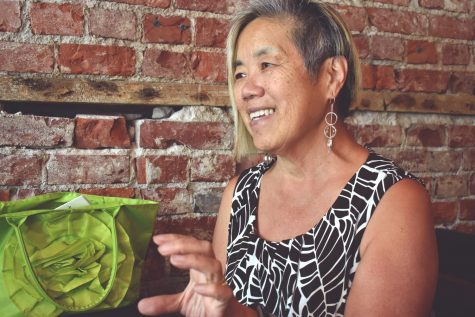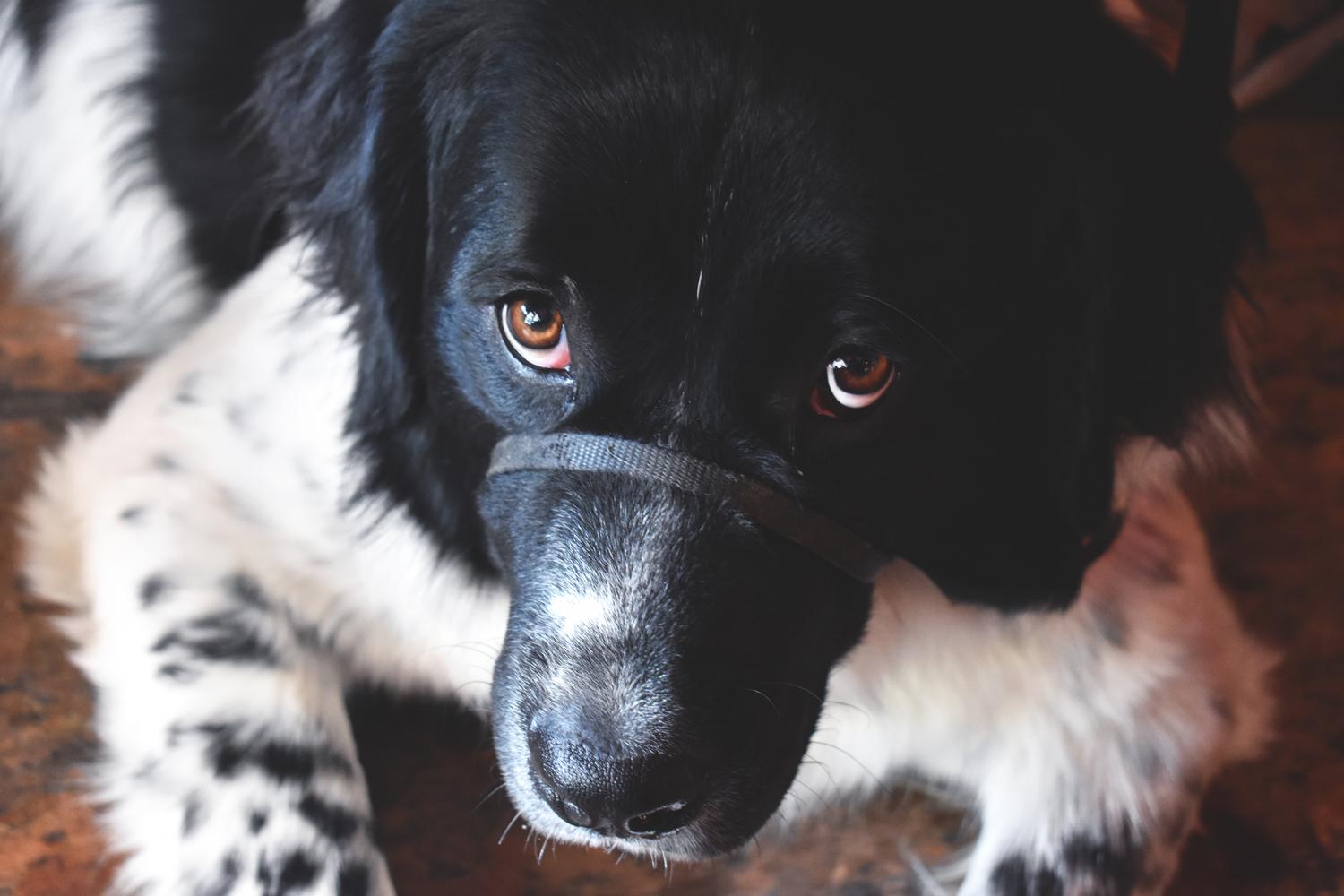Service dogs helping children
The Autism Anchoring Dogs program trains dogs to protect autistic children before they run off
KEISHA BROKAW | The Daily Evergreen
Puppy raiser Esther Louie is training Lucy the Newfoundland to be placed with a family in need through the program Autism Anchoring Dogs. They go to noisy or crowded places like The Daily Grind in downtown Pullman.
September 1, 2017
Service dogs provide immeasurable assistance to those that need them, in addition to helping people in ways they might not even expect.
Autism Anchoring Dogs (AAD) are a type of service dog specifically trained for autistic children. Some children will bolt, or “elope,” when overstimulated or overwhelmed in the environment they are in.
The dogs act as both an emotional and physical anchor for the child, to whom they are tethered by a specially designed harness and leash.
Esther Louie, a puppy raiser in Moscow, first got involved in therapy work with her Doberman, Zeus. After retiring in 2014 and getting to know other service dog raisers in the area, she decided to raise a puppy of her own. She currently has her second puppy, a Newfoundland named Lucy, through AAD.
Louie and her husband committed as a way of being in good service, she said. Most people raising these puppies have full-time jobs.
“I didn’t realize until after I retired how much that sense of ‘in-service’ and helping others was so strong for me,” Louie said. “So I thought ‘what else can I do?’”
Louie’s job mainly requires her to put Lucy through basic and advanced obedience classes, and generally expose her to various situations she might encounter as a service dog, such as going to restaurants, coffee houses, grocery stores or movie theaters, she said.
Lucy also just completed her “good citizenship” training, which the American Kennel Club created to train dogs in general good manners, Louie said. Dogs continue refining their ability to sit and stay, as well as learn not to fear strangers or eat food off the floor.
Lucy will probably stay with Louie through the fall, she said. After that, Lucy will return to the program for her formal training as a service dog. Generally, with service dogs, 16 to 18 months old marks the beginning of their service training.
“At about a year and a half, they’ve gone through what I call their ‘knucklehead chapter,’” Louie said. “Usually in the early months, they’re very agreeable and then they start acting stubborn. But maturity-wise, they start settling down at about a year and a half.”
The formal training teaches the dogs to drop and act as an anchor once an eloping child pulls on their leash, Louie said. They stay there until the handler gives the release command.
“Another thing that service dogs do is become a social bridge so that the child has a way of engaging with people,” Louie said. “Depending on the level on autism, the child may shy away from people or have challenges communicating. The dog provides an entry.”

Puppy raiser Esther Louie discusses the three main breeds of dogs trained for Autism Anchoring Dogs: Newfoundlands, St. Bernards and Leonbergers. They choose them for their size and temperament.
As far as out-of-class training goes, Louie tries to expose Lucy to various strange sights and sounds, she said. On walks, if she sees a construction site with lots of activity going on, they will walk by it. They try to go to grocery stores on busy days so Lucy can familiarize herself with those situations.
Socializing service dogs comes easy because the community welcomes them, she said. Many stores in the area open their doors to such dogs. Elementary schools invite her and Lucy to give presentations about service dogs.
“Sometimes, when it’s garbage morning in our neighborhood,” Louie said, “I’ll take Lucy outside so she’s exposed to that big, banging noise and all the things that go with it.”
Even though Louie eventually has to give up Lucy, she said she always remembers that a family needs this dog. The director of the program once told her that the dog will always remember the loving environment they gave them.
Kirsten Becker, director of AAD, founded the program after losing her own autistic son to an eloping related incident in 2006.
Dogs in AAD follow the more respected, international standards in service dog training, Becker said. Most trainers adhere to those standards because they are stricter and require more hours. They go through AAD training and basic obedience, then they put on about 200 hours of public access work.
They generally use Saint Bernards, Newfoundlands and Leonbergers because of their gentle, sweet temperaments and their large size, she said.
Louie said she sees all sorts of anecdotal stories about how dogs can sense feelings and make connections, which amazes her, she said. They taught her that sometimes people just need to sit with someone for a while.
“The greatest part about doing this is that it keeps me positive, given what’s happening in our world,” Louie said. “I feel useful.”
Phyllis Erdman, human-animal relations expert and WSU dean of the College of Education, said therapy dogs create an environment that helps people. In programs with children who have family problems at home, kids learn communication or nurturing skills by interacting with the dogs.
Currently, most of research has an anecdotal basis, Erdman said. But research is moving toward the scientific aspect, by looking at brain activity to see if people have an oxytocin release when interacting with animals, so they can say more than that dogs just make people feel good.
This type of research will add legitimacy to therapy and service dog programs to prove the need of such services, she said.
However, these programs can also face misinterpretation, as people might assign qualities to the dog that don’t exist. In the case of AAD, the dog just acts as a physical anchor for the child.
“Some may see it as miraculous,” Erdman said, “but you shouldn’t put that much value into these programs, which is why research is needed. Understand that these dogs certainly have a purpose, appreciate what they can contribute, but also be realistic.”
To donate to Autism Anchoring Dogs or to volunteer as a puppy raiser, information can be found on their website of the same name. Stories about AAD’s success can be found on their Facebook page.










